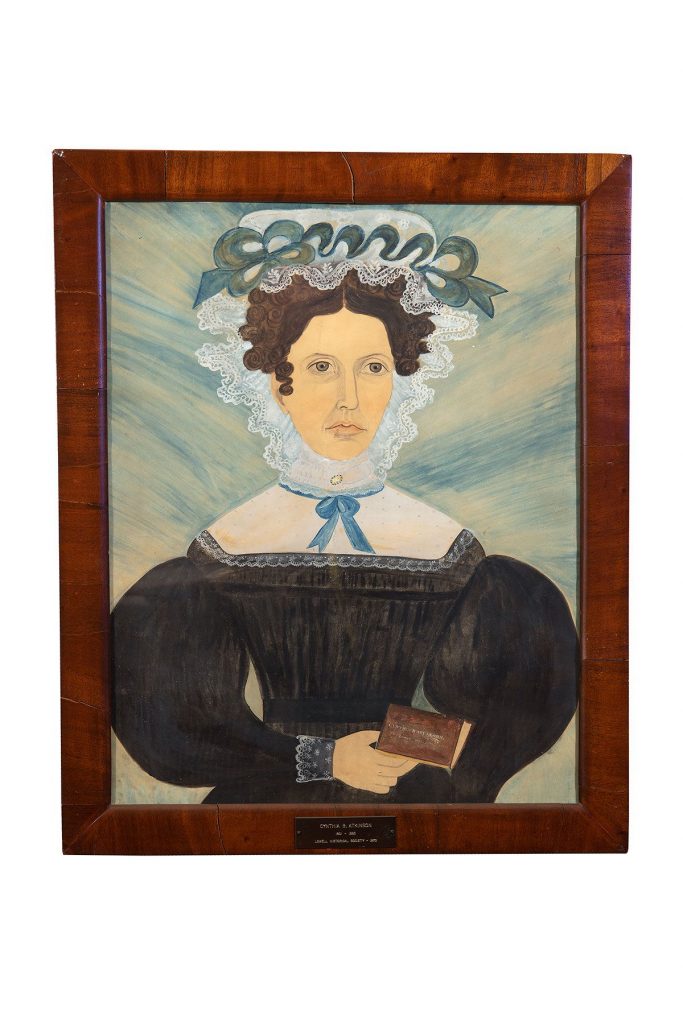
In the early 1830s, when Lowell was an emerging boom town of textiles and mill girls, there were no cameras or Instagram posts showing who was wearing what or the latest in hairstyle or fashion. At the time, the only reference to how one looked was through portraiture.
Because of Lowell’s reputation as an industrial center, many itinerant artists came through the city to paint portraits. Two of those, the married couple Samuel and Ruth Shute, arrived in the city around 1828 and quickly, through local advertisements, began producing watercolor portraits of the young working women and other Lowell residents. What an opportunity that must have been for a mill girl! Here she was, away from home, making her own money for the first time and taking advantage of all city life had to offer.
According to the article “The Shutes’ portraits were a visual reflection of changes in the self- perception of the mill employees…instead of displaying what was seen in a mirror, the sitter’s identity was elevated into a handsome image with the latest fashionable dress, jewelry, and glamorized body shape…Probably none of these women owned any such finery nor had the physique and feminine allure depicted in the portraits. The sitter’s family may not have even recognized the transformed person who had been painted. Perhaps to assuage any doubt, in several portraits the sitter holds a letter or book with her name on it.”
Today the Shutes are recognized as important artists in the American folk art world and their work is highly sought by collectors and museums alike. Their importance is such that they are the focus of a major article in the recently released edition of The Magazine ANTIQUES. Although the piece covers their entire careers and styles as artists, it is the focus on their work in the city and the Lowell people who hired them that is of great interest to the Lowell Historical Society. The Society owns four Shute paintings. Three are of the Atkinson family — James, Cynthia and their young daughter Cynthia Jane — and the fourth is of an unidentified woman. The article includes images of the Society’s paintings of James and his wife Cynthia to illustrate key points of the story.
Who were the Atkinsons? In research done by the late Catherine Goodwin, James (1784-1874) and his wife Cynthia Bicknell (1801-1865), were in Lowell in 1824 and married on June 29, 1827, making them one of Lowell’s earliest families. Cynthia and her sisters worked in the Lowell mills as operatives until their marriages. James had several occupations, including being one of the only two town criers Lowell ever had, making nightly rounds ringing a handbell, announcing curfew, and delivering other messages. Later, he was city crier and bill poster. James was listed as a member of the Beethoven Society, and Cynthia was one of the females invited to sing. They went on to have five children. Upon their death, James and Cynthia were buried in the Lowell Cemetery.
We invite you to read the full article on the Shutes at Portraits, Purpose, and Perceptions
The Society’s four Shute paintings are currently on display in the Whistler House Museum of Art on Worthen Street in Lowell. Please check their website for closure due to COVID-19.
